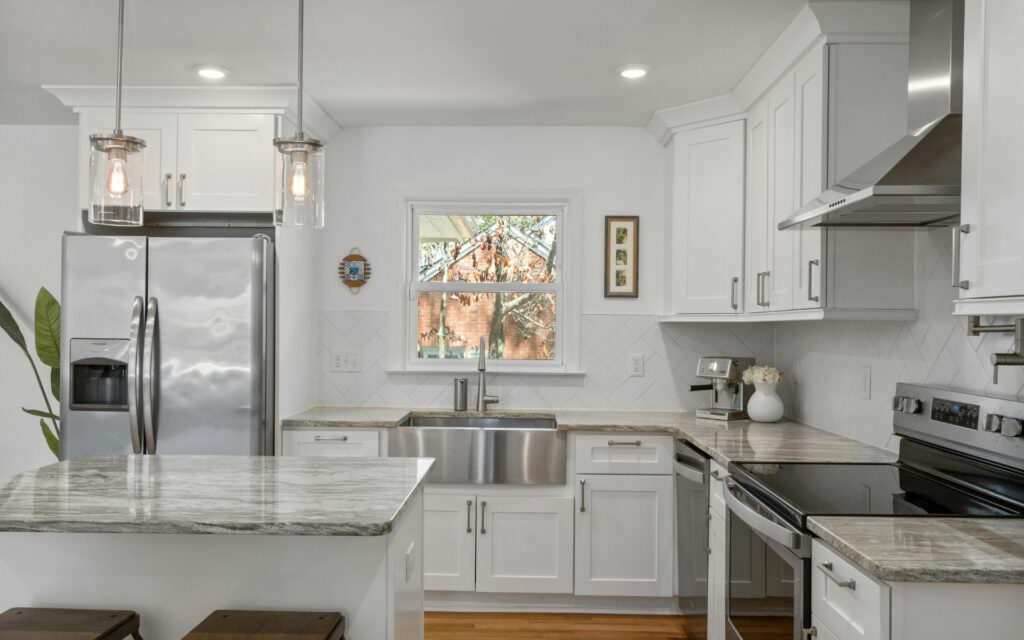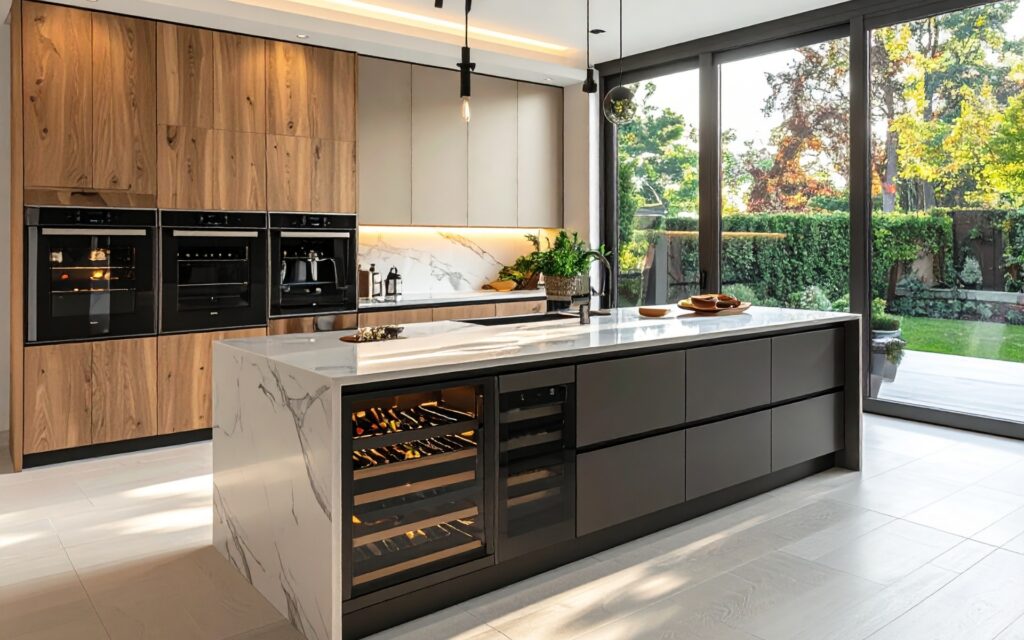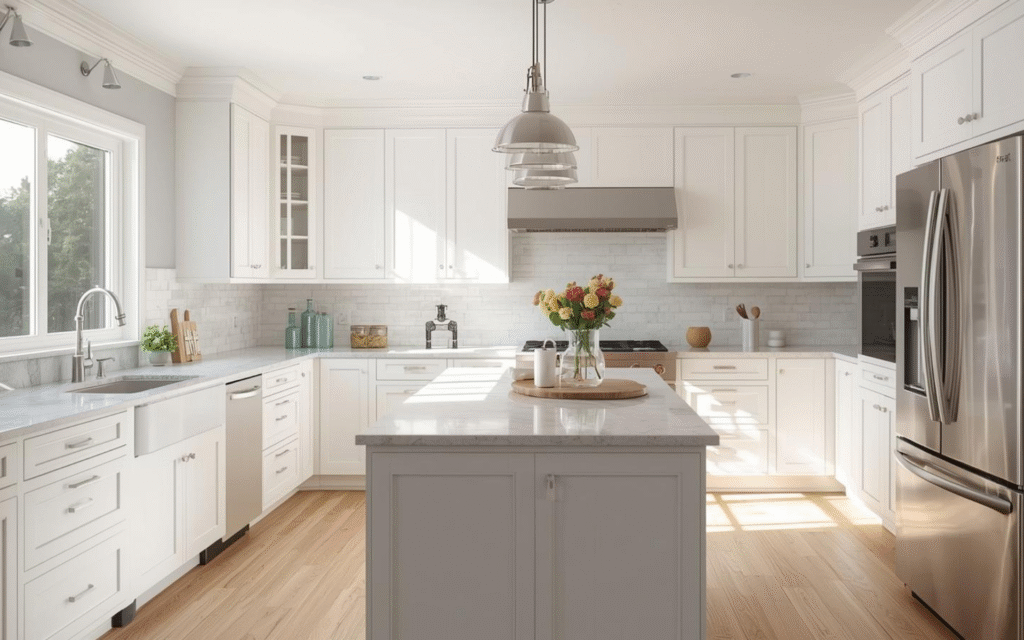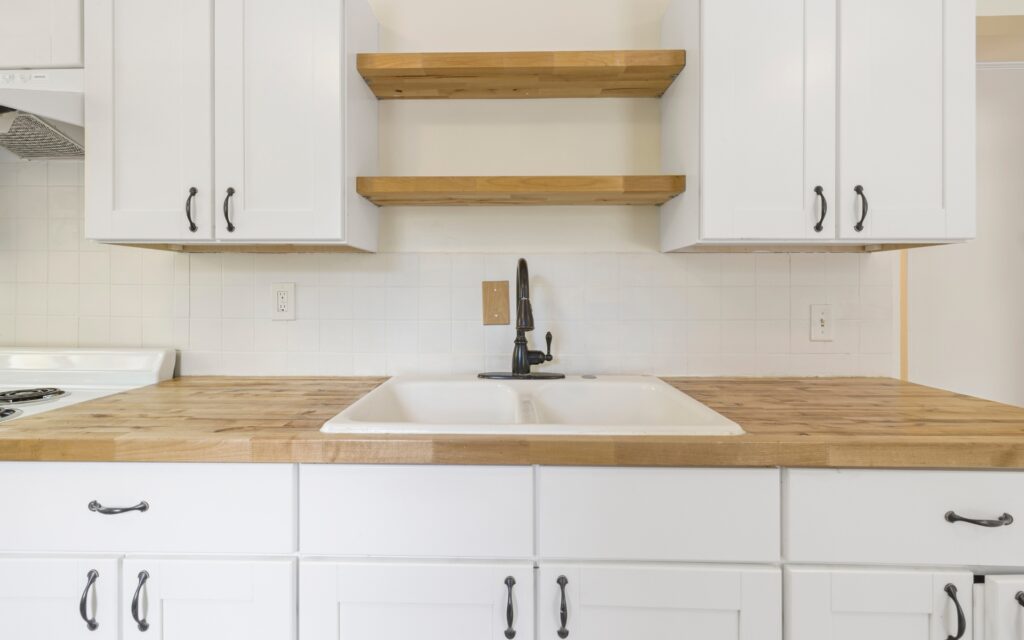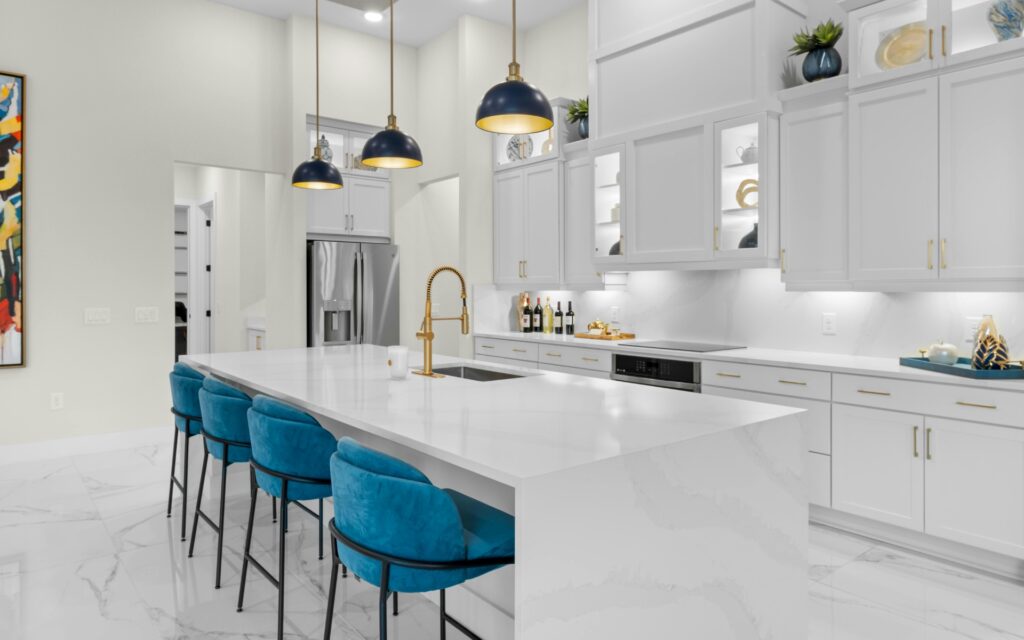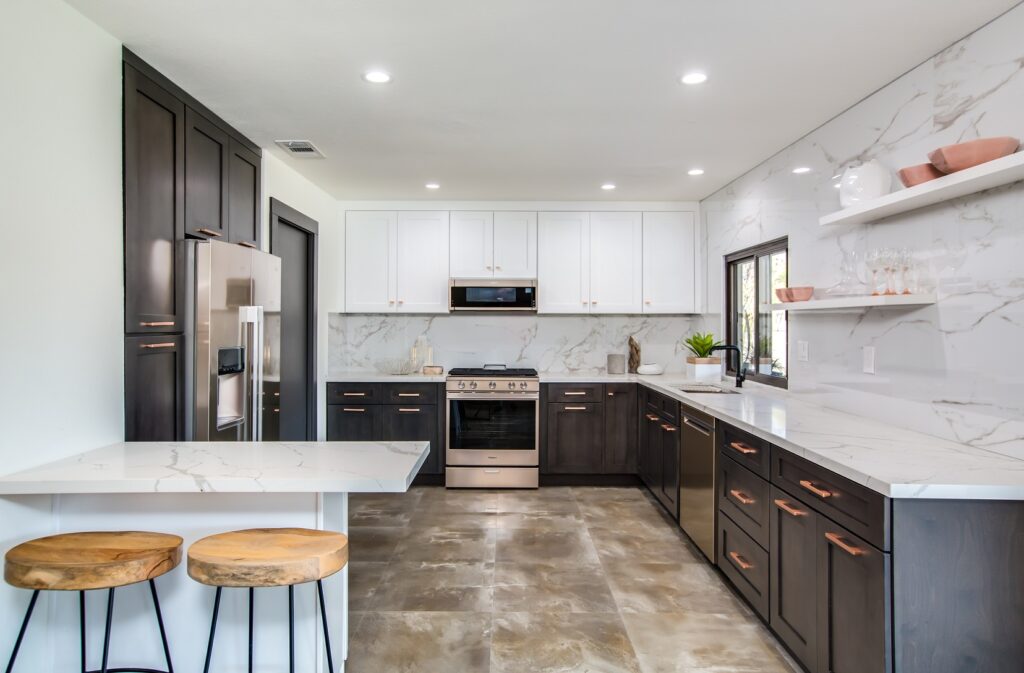Thinking about updating your kitchen but feeling overwhelmed by the costs? You’re not alone. Thousands of homeowners are discovering that RTA kitchen cabinets offer the perfect solution for achieving a beautiful, functional kitchen without the hefty price tag of custom cabinetry. These clever cabinet systems have revolutionized how people approach kitchen remodeling, making quality upgrades accessible to families across all budget ranges.
The Ready to assemble kitchen cabinets aren’t just a budget-friendly alternative. They’re a smart choice that puts control back in your hands. You get to decide on the timeline, customize the installation to your kitchen remodel needs, and save thousands on labor costs, all while getting the same quality materials you’d find in pre-assembled options.
What Exactly Are RTA Kitchen Cabinets?
RTA cabinets stand for “ready-to-assemble” cabinets, and the name tells you everything you need to know. These cabinets arrive at your doorstep in carefully packaged flat boxes, complete with all the components, hardware, and detailed instructions needed to build beautiful kitchen storage.
Think of them like sophisticated furniture kits designed specifically for kitchens. Every piece is precision-cut, every hole is pre-drilled, and all the screws, hinges, and mounting hardware come included. The only difference between these and expensive custom cabinets is that you get to put them together yourself, which actually offers some pretty amazing advantages.
Unlike traditional custom cabinets that can take months to manufacture and cost tens of thousands of dollars, RTA kitchen cabinets ship quickly and arrive ready for immediate assembly. You’re getting the same quality construction and materials, just without the premium price tag for professional assembly.
Breaking Down the Different Types of Kitchen Cabinets
Understanding your options helps you make the smartest decision for your kitchen renovation. The world of kitchen cabinets breaks down into several categories, each with distinct advantages and price points.
Custom Cabinets
Custom cabinets are built specifically for your kitchen by skilled craftspeople. They offer unlimited design possibilities and a perfect fit for unusual spaces, but expect to pay $30,000 or more, plus installation costs that can add another $1,500 to $3,000 to your bill.
Semi-Custom Cabinets
These offer more customization than stock options while maintaining some cost control. You can modify dimensions and choose from expanded color and style selections, but you’ll still pay premium prices for these conveniences.
Stock Cabinets
Stock cabinets are pre-made in standard sizes and readily available at home improvement stores. While they’re more affordable than custom options, your choices are limited to whatever’s currently in stock.
RTA Kitchen Cabinets
Ready-to-assemble kitchen cabinets combine the quality of custom construction with the affordability of stock cabinets. You get extensive customization options, high-quality materials, and professional results at a fraction of custom cabinet costs.
Why RTA Kitchen Cabinets Are Winning Over Homeowners
The popularity of RTA cabinets isn’t just about saving money – though that’s certainly a major factor. These cabinet systems offer benefits that even expensive alternatives can’t match.
Unbeatable Cost Savings
Here’s where RTA kitchen cabinets really shine. They cost, on average, about 20 percent less than pre-assembled cabinets, according to leading distributors, and they are often an order of magnitude cheaper than custom ones (which means you can drop one zero from the price tag).
This means a kitchen that would cost $25,000 with custom cabinets might only cost $2,500 with quality RTA options. That’s not a typo – the savings really are that dramatic.
Transportation and Logistics Advantages
Shipping bulky, pre-assembled cabinets costs a fortune and requires special delivery trucks. RTA cabinets solve this problem elegantly. RTA cabinets come packaged in flat boxes that are easier to stack and less expensive to ship than bulky cabinets. In fact, if you buy the cabinets at a big box store like Lowe’s or IKEA, you can usually carry them home yourself.
Quality That Surprises
Don’t let the affordable price fool you into thinking you’re getting inferior products. RTA cabinets have a somewhat undeserved reputation for being of lower quality than pre-assembled ones, and that may have been true back in the day when most of them were made from particleboard or medium-density fiberboard (MDF). You can still find these low-cost cabinets, but quality products made exclusively from veneered plywood are increasingly common.
Today’s RTA kitchen cabinets use the same materials and construction methods as expensive pre-built alternatives.
Customization Freedom
Want to stain or paint your cabinets in a specific color? You can choose unfinished RTA cabinets (and save even more money since they are usually cheaper than finished ones), unpack the pieces, and stain or paint them at home before assembling them. It’s a lot easier than staining or painting pre-assembled cabinets.
This level of customization gives you complete control over your kitchen’s final appearance.
Assembly That Actually Makes Sense
Gone are the days of cryptic instruction manuals and missing hardware. RTA cabinets are usually very easy to assemble. They come with their own fasteners, and sometimes even a tool for tightening them. The holes for the fasteners are even pre-drilled.
Understanding RTA Cabinet Construction and Materials
The quality of your RTA kitchen cabinets depends heavily on the materials used in construction. Understanding these differences helps you choose the best value for your specific needs and budget.
Cabinet Box Materials
The cabinet box forms the structural foundation of your storage system. Higher-quality RTA cabinets use solid plywood construction, which provides superior strength and longevity compared to particleboard alternatives. Plywood resists moisture better and holds screws more securely over time.
Door and Drawer Front Options
Cabinet doors and drawer fronts are where style really shows. You’ll find options ranging from classic raised panel designs to sleek contemporary flat panels. Solid wood doors offer the most traditional appeal, while MDF with wood veneer provides a cost-effective alternative that still looks beautiful.
Hardware and Mechanisms
Quality hinges and drawer slides make the difference between cabinets that function smoothly for decades and ones that become frustrating to use within a few years. Look for soft-close mechanisms and full-extension drawer slides when comparing RTA kitchen cabinet options.
The Best Affordable Kitchen Cabinets for Your Budget
Finding the best affordable kitchen cabinets doesn’t mean settling for poor quality. It means understanding how to maximize value while getting the features and durability your family needs.
Evaluating Cost vs. Value
Price alone doesn’t determine value. A slightly more expensive RTA cabinet system with solid wood construction and quality hardware will serve you better long-term than the cheapest particleboard option available.
Styles That Offer the Best Return
Certain cabinet styles offer better long-term value because they remain timelessly appealing. Shaker-style doors, for example, work beautifully in both traditional and contemporary settings, making them a smart investment that won’t look dated in a few years.
Features Worth the Investment
Some upgrades provide disproportionate value improvements. Soft-close hinges prevent slamming and extend cabinet life. Full-extension drawer slides allow complete access to storage space. These features cost a little more upfront but significantly improve daily functionality.
Planning Your RTA Kitchen Cabinet Project
Success with ready to assemble kitchen cabinets starts with careful planning. Taking time upfront to measure accurately and plan your layout prevents costly mistakes and ensures professional-looking results.
Accurate Measuring Techniques
Cabinet installation requires precision measuring. Start by identifying the highest point on your floor. This becomes your reference point for all measurements. Use a level to ensure your measurements account for any floor irregularities.
Create detailed drawings of your kitchen layout, noting window and door locations, electrical outlets, and plumbing connections. This planning prevents surprises during installation.
Layout Considerations
Think carefully about your kitchen workflow. The classic work triangle between sink, stove, and refrigerator should guide your cabinet placement. Consider how doors and drawers will open in relation to each other and to major appliances.
Timeline and Logistics
RTA kitchen cabinets typically ship within days rather than the weeks or months required for custom options. However, allow adequate time for assembly – each cabinet typically takes 30-50 minutes to put together, depending on complexity.
Assembly Process: Step-by-Step Success
The assembly process for RTA cabinets follows logical steps that build confidence as you progress. Starting with base cabinets and working systematically through your kitchen creates the most efficient workflow.
Essential Tools and Workspace
Gather all necessary tools before starting: screwdriver, drill, measuring tape, level, and clamps. Create a clean, spacious work area where you can lay out cabinet components without risk of scratching or damage.
Base Cabinet Assembly
Base cabinets form the foundation of your kitchen storage. These typically include cabinet boxes, doors, drawers, and adjustable legs. Follow the provided instructions carefully, paying special attention to ensuring everything stays square during assembly.
Wall Cabinet Considerations
Wall cabinets are generally lighter and simpler to assemble than base units, but they require careful handling during installation. The suspension rail systems used by many manufacturers make installation easier and more precise than traditional methods.
Drawer Assembly and Hardware Installation
Drawer assembly involves attaching slides to both the drawer box and the cabinet interior. Take time to ensure slides are level and aligned. This prevents binding and ensures smooth operation for years to come.
Installation Tips for Professional Results
Even with quality RTA kitchen cabinets, the installation technique makes the difference between amateur and professional-looking results. Following proven methods ensures your kitchen looks like it was installed by experienced contractors.
Foundation and Leveling
Start by establishing level reference lines on your walls. Find the highest point where base cabinets will sit, then measure up 34.5 inches (standard base cabinet height) to create your reference line for wall cabinet installation.
Sequence and Methodology
Install base cabinets first, starting with corner units and working outward. This approach makes adjustments easier and ensures proper alignment throughout your kitchen. Wall cabinets come next, using the reference lines established earlier.
Finishing Touches That Matter
Professional-looking installations pay attention to details like consistent spacing, proper alignment of doors and drawers, and secure attachment to wall studs. Take time to adjust hinges and drawer slides for smooth operation.
Maintenance and Longevity of RTA Kitchen Cabinets
Proper care ensures your RTA kitchen cabinets remain beautiful and functional for decades. Understanding maintenance requirements helps you protect your investment and keep your kitchen looking its best.
Daily Care Practices
Regular cleaning with mild soap and water keeps cabinet surfaces looking fresh. Avoid abrasive cleaners that can damage finishes, and always dry surfaces thoroughly to prevent water damage.
Seasonal Maintenance
Check hinges and drawer slides periodically, tightening screws as needed. Wood cabinets may require occasional conditioning, especially in dry climates where seasonal humidity changes affect wood movement.
Long-Term Durability
Quality RTA kitchen cabinets can last 20 years or more with proper care. The key lies in choosing quality materials initially and maintaining them properly throughout their service life.
Comparing RTA Cabinets to Other Kitchen Cabinet Options
Understanding how RTA kitchen cabinets compare to alternatives helps you make informed decisions based on your priorities, timeline, and budget constraints.
RTA vs. Pre-Assembled Cabinets
Pre-assembled cabinets arrive ready to install but cost significantly more due to labor and shipping expenses. You also lose the customization options available with unfinished RTA cabinets.
RTA vs. Custom Cabinets
Custom cabinets offer unlimited design possibilities but require months for completion and cost 10 times more than comparable RTA options. For most homeowners, the extra features don’t justify the dramatic cost increase.
RTA vs. IKEA Systems
IKEA offers well-designed RTA kitchen cabinets with excellent support systems, but style choices are limited. Dedicated RTA manufacturers typically offer a broader selection and more traditional styling options.
Design Ideas and Inspiration for RTA Kitchens
RTA kitchen cabinets work beautifully in virtually any design style. Understanding how to use them effectively helps you create the kitchen of your dreams, regardless of your chosen aesthetic.
Contemporary and Modern Designs
Flat-panel doors in bold colors or natural wood tones create clean, contemporary looks. Handle-less designs with push-to-open mechanisms emphasize minimalist aesthetics while maintaining full functionality.
Traditional and Classic Styles
Raised panel doors with decorative hardware bring traditional elegance to any kitchen. Crown molding and furniture-style details available with many RTA cabinet lines complete the classic look.
Transitional Approaches
Combining contemporary convenience with traditional warmth, transitional designs use simple door styles with classic proportions. This approach ensures your kitchen remains stylish for decades to come.
Budget Planning for Your RTA Kitchen Project
Successful RTA kitchen cabinet projects require realistic budget planning that accounts for all necessary components and potential additional costs.
Cabinet Costs and Pricing Structure
RTA cabinets typically cost 50-70% less than equivalent pre-assembled options. Factor in the time value of your assembly labor when comparing total project costs.
Additional Components and Accessories
Don’t forget to budget for countertops, backsplashes, and appliances. The money saved on RTA kitchen cabinets can often fund upgrades in other areas of your kitchen renovation.
Hidden Costs and Considerations
Account for delivery charges, additional hardware, and potential tool purchases. Some projects may require electrical or plumbing modifications that add to overall costs.
Working with Experts for Your RTA Kitchen Cabinet Project
Choosing the right partner for your RTA kitchen cabinets project ensures access to quality products, expert guidance, and ongoing support throughout your renovation journey.
Our experienced team understands the unique challenges and opportunities that come with ready-to-assemble kitchen cabinets. We work with homeowners to select the right cabinet styles, materials, and configurations for their specific needs and budgets.
From initial planning through final installation support, we’re committed to helping you achieve the kitchen you’ve always wanted. Our selection of best affordable kitchen cabinets includes options for every style preference and budget level.
Call now to schedule your free consultation and take the first step toward the kitchen you’ve always wanted. Cabinetland design experts are standing by to answer your questions and help you explore the incredible possibilities that RTA kitchen cabinets offer.

